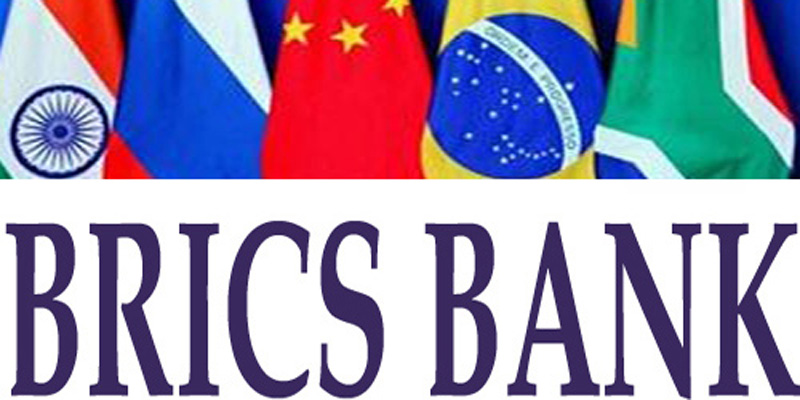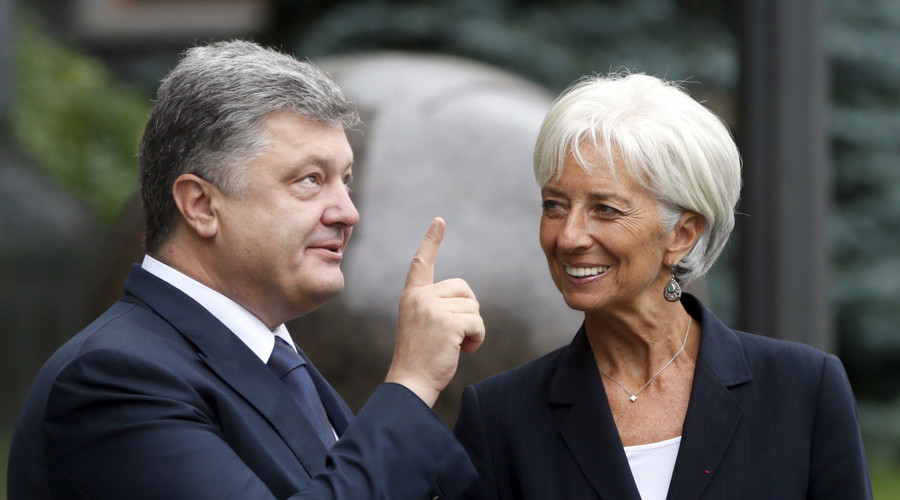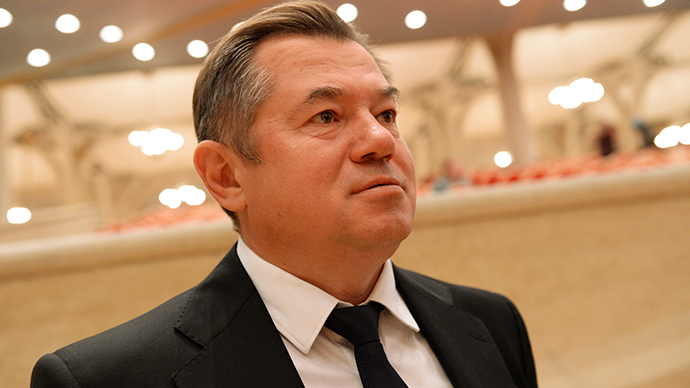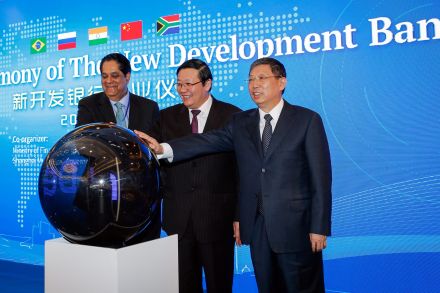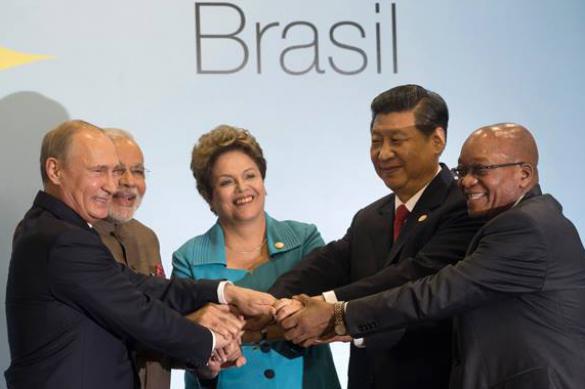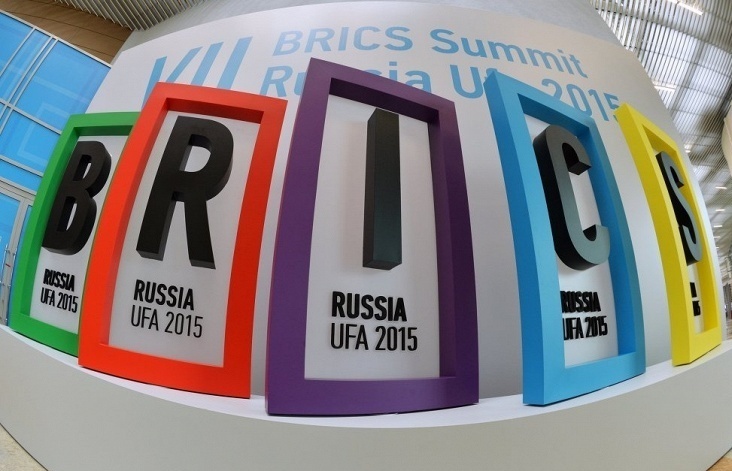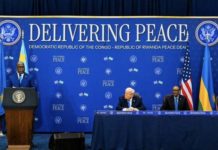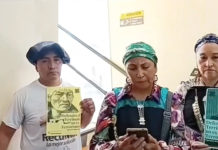By Prof Michel Chossudovsky
The financial media as well as segments of the alternative media are pointing to a possible weakening of the US dollar as a global trading currency resulting from the BRICS (Brazil, Russia, India, China, South Africa) initiative.
One of the central arguments in this debate on competing World currencies hinges on the BRICS initiative to create a development bank which, according to analysts, challenges the hegemony of Wall Street and the Washington based Bretton Woods institutions.
The BRICS New Development Bank (NDB) was set up to challenge two major Western-led giants – the World Bank and the International Monetary Fund. NDB’s key role will be to serve as a pool of currency for infrastructure projects within a group of five countries with major emerging national economies – Russia, Brazil, India, China and South Africa. (RT, October 9, 2015, emphasis added)
More recently, emphasis has been placed on the role of China’s new Asia Infrastructure Investment Bank (AIIB), which, according to media reports, threatens to “transfer global financial control from Wall Street and City of London to the new development banks and funds of Beijing and Shanghai”.

The decision to create general reserves was made in July 2014 at the Sixth Summit of BRICS at Fortaleeza in Brazil. Source: AP
There has been a lot of media hype regarding BRICS.
While the creation of BRICS has significant geopolitical implications, both the AIIB as well as the proposed BRICS Development Bank (NDB) and its Contingency Reserve Arrangement (CRA) are dollar denominated entities. Unless they are coupled with a multi-currency system of trade and credit, they do not threaten dollar hegemony. Quite the opposite, they tend to sustain and extend dollar denominated lending. Moreover, they replicate several features the Bretton Woods framework.
Towards a Multi-Currency Arrangement?
What is significant, however, from a geopolitical standpoint is that China and Russia are developing a ruble-yuan swap, negotiated between the Russian Central Bank, and the People’s Bank of China,
The situation of the other three BRICS member states (Brazil, India, South Africa) with regard to the implementation of (real, rand rupiah) currency swaps is markedly different. These three highly indebted countries are in the straightjacket of IMF-World Bank conditionalities. They do not decide on fundamental issues of monetary policy and macro-economic reform without the green light from the Washington based international financial institutions.
Currency swaps between the BRICS central banks was put forth by Russia to:
“facilitate trade financing while completely bypassing the dollar. “At the same time, the new system will also act as a de facto replacement of the IMF, because it will allow the members of the alliance to direct resources to finance the weaker countries.” (Voice of Russia)
While Russia has formally raised the issue of a multi-currency arrangement, the Development Bank’s structure does not currently “officially” acknowledge such a framework:
“We are discussing with China and our BRICS parters the establishment of a system of multilateral swaps that will allow to transfer resources to one or another country, if needed. A part of the currency reserves can be directed to [the new system]” (Governor of the Russian Central Bank, June 2014, Prime news agency)
India, South Africa and Brazil have decided not to go along with a multiple currency arrangement, which would have allowed for the development of bilateral trade and investment activities between BRICs countries, operating outside the realm of dollar denominated credit. In fact they did not have the choice of making this decision in view of the strict loan conditionalities imposed by the IMF.
Heavily indebted under the brunt of their external creditors, all three countries are faithful pupils of the IMF-World Bank. The central bank of these countries is controlled by Wall Street and the IMF. For them to enter into a “non-dollar” or an “anti-dollar” development banking arrangement with multiple currencies, would have required prior approval of the IMF.
The Contingency Reserve Arrangement
The CRA is defined as a “framework for provision of support through liquidity and precautionary instruments in response to actual or potential short-term balance of payments pressures.” (Russia India Report April 7, 2015). In this context, the CRA fund does not constitute a “safety net” for BRICS countries, it accepts the hegemony of the US dollar which is sustained by large scale speculative operations in the currency and commodity markets.
In essence the CRA operates in a similar fashion to an IMF precautionary loan arrangement (e.g. Brazil November 1998) with a view to enabling highly indebted countries to maintain the parity of their exchange rate to the US dollar, by replenishing central bank reserves through borrowed money.
The CRA excludes the policy option of foreign exchange controls by BRICS member states. In the case of India, Brazil and South Africa, this option is largely foreclosed as a result of their agreements with the IMF.
The dollar denominated $100 billion CRA fund is a “silver platter” for Western “institutional speculators” including JP Morgan Chase, Deutsche Bank, HSBC, Goldman Sachs et al, which are involved in short selling operations on the Forex market. Ultimately the CRA fund will finance the speculative onslaught in the currency market.
Neoliberalism firmly entrenched
An arrangement using national currencies instead of the US dollar requires sovereignty in central bank monetary policy. In many regards, India, Brazil and South Africa are (from the monetary standpoint) US proxy states, firmly aligned with IMF-World Bank-WTO economic diktats.
It is worth recalling that since 1991, India’s macroeconomic policy was under under the control of the Bretton Woods institutions, with a former World Bank official, Dr. Manmohan Singh, serving first as Finance Minister and subsequently as Prime Minister.
Moreover, while India is an ally of China and Russia under BRICS, it has enteredinto a new defense cooperation deal with the Pentagon which is (unofficially) directed against Russia and China. It is also cooperating with the US in aerospace technology. India constitutes the largest market (after Saudi Arabia) for the sale of US weapons systems. And all these transactions are in US dollars.
Similarly, Brazil signed a far-reaching Defense agreement with the US in 2010 under the government of Luis Ignacio da Silva, who in the words of the IMF’s former managing director Heinrich Koeller, “Is Our Best President”, “… I am enthusiastic [with Lula’s administration]; but it is better to say I am deeply impressed by President Lula, indeed, and in particular because I do think he has the credibility” (IMF Managing Director Heinrich Koeller, Press conference, 10 April 2003 ).
In Brazil, the Bretton Woods institutions and Wall Street have dominated macro-economic reform since the outset of the government of Luis Ignacio da Silva in 2003. Under Lula, a Wall Street executive was appointed to head the Central Bank, the Banco do Brazil was in the hands of a former CitiGroup executive. While there are divisions within the ruling PT party, neoliberalism prevails. Economic and social in Brazil is in large part dictated by the country’s external creditors including JPMorgan Chase, Bank America and Citigroup.
Central Bank Reserves and The External Debt
India and Brazil (together with Mexico) are among the World’s most indebted developing countries. The foreign exchange reserves are fragile. India’s external debt in 2013 was of the order of more than $427 Billion, that of Brazil was a staggering $482 billion, South Africa’s external debt was of the order of $140 Billion. (World Bank, External Debt Stock, 2013).
External Debt Stock (2013)
Brazil $482 billion
India $427 billion
South Africa $140 billion
All three countries have central banks reserves (including gold and forex holdings) which are lower than their external debt (see table below).
Central Bank Reserves (2013)
Brazil $359 billion
India: $298 billion
South Africa $50 billion
The situation of South Africa is particularly precarious with an external debt which is almost three times its central bank reserves.
What this means is that these three BRICS member states are under the brunt of their Western creditors. Their central bank reserves are sustained by borrowed money. Their central bank operations (e.g. with a view to supporting domestic investments and development programs) will require borrowing in US dollars. Their central banks are essentially “currency board” arrangements, their national currencies are dollarized.
The BRICs Development Bank (NDB)
On 15 July 2014, the group of five countries signed an agreement to create the US$100 billion BRICS Development Bank together with a US dollar denominated ” reserve currency pool” of US$100 billion. These commitments were subsequently revised.
Each of the five-member countries ”is expected to allocate an equal share of the $50 billion startup capital that will be expanded to $100 billion. Russia has agreed to provide $2 billion from the federal budget for the bank over the next seven years.” (RT, March 9, 2015).
In turn, the commitments to the Contingency Reserve Arrangement are as follows;
Brazil, $18 billion
Russia $18 billion
India $18 billion
China $41 billion
South Africa $5 billion
Total $100 billion
As mentioned earlier, India, Brazil and South Africa, are heavily indebted countries with central bank reserves substantially below the level of their external debt. Their contribution to the two BRICs financial entities can only be financed:
- by running down their dollar denominated central bank reserves and/or
- by financing their contributions to the Development Bank and CRA, by borrowing the money, namely by “running up” their dollar denominated external debt.
In both cases, dollar hegemony prevails. In other words, the Western creditors of these three countries will be required to “contribute” directly or indirectly to the financing of the dollar denominated contributions of Brazil, India and South Africa to the BRICS development bank (NDB) and the CRA.
In the case of South Africa with Central Bank reserves of the order of 50 billion dollars, the contribution to the BRICS NDB will inevitably be financed by an increase in the country’s (US dollar denominated) external debt.
Moreover, with regard to India, Brazil and South Africa, their membership in the BRICS Development Bank was no doubt the object of behind closed doors negotiations with the IMF as well as guarantees that they would not depart from the “Washington Consensus” on macro-economic reform.
Under a scheme whereby these countries were to be in be in full control of their Central Bank monetary policy, the contributions to the Development Bank (NDB) would be allocated in national currency rather than US dollars under a multi-currency arrangement. Needless to say under a multi-currency system the contingency CRA fund would not be required.
The geopolitics behind the BRICS initiative are crucial. While the BRICS initiative from the very outset has accepted the dollar system, this does not exclude the introduction, at a later stage of a multiple currency arrangement, which challenges dollar hegemony.
